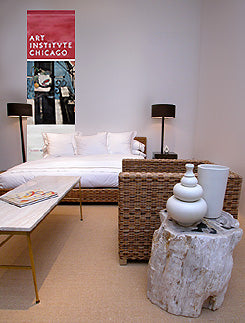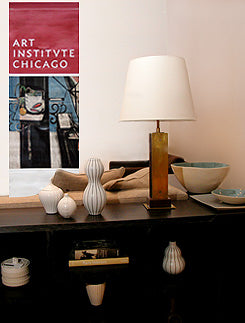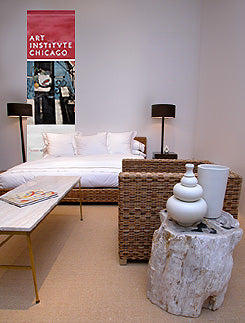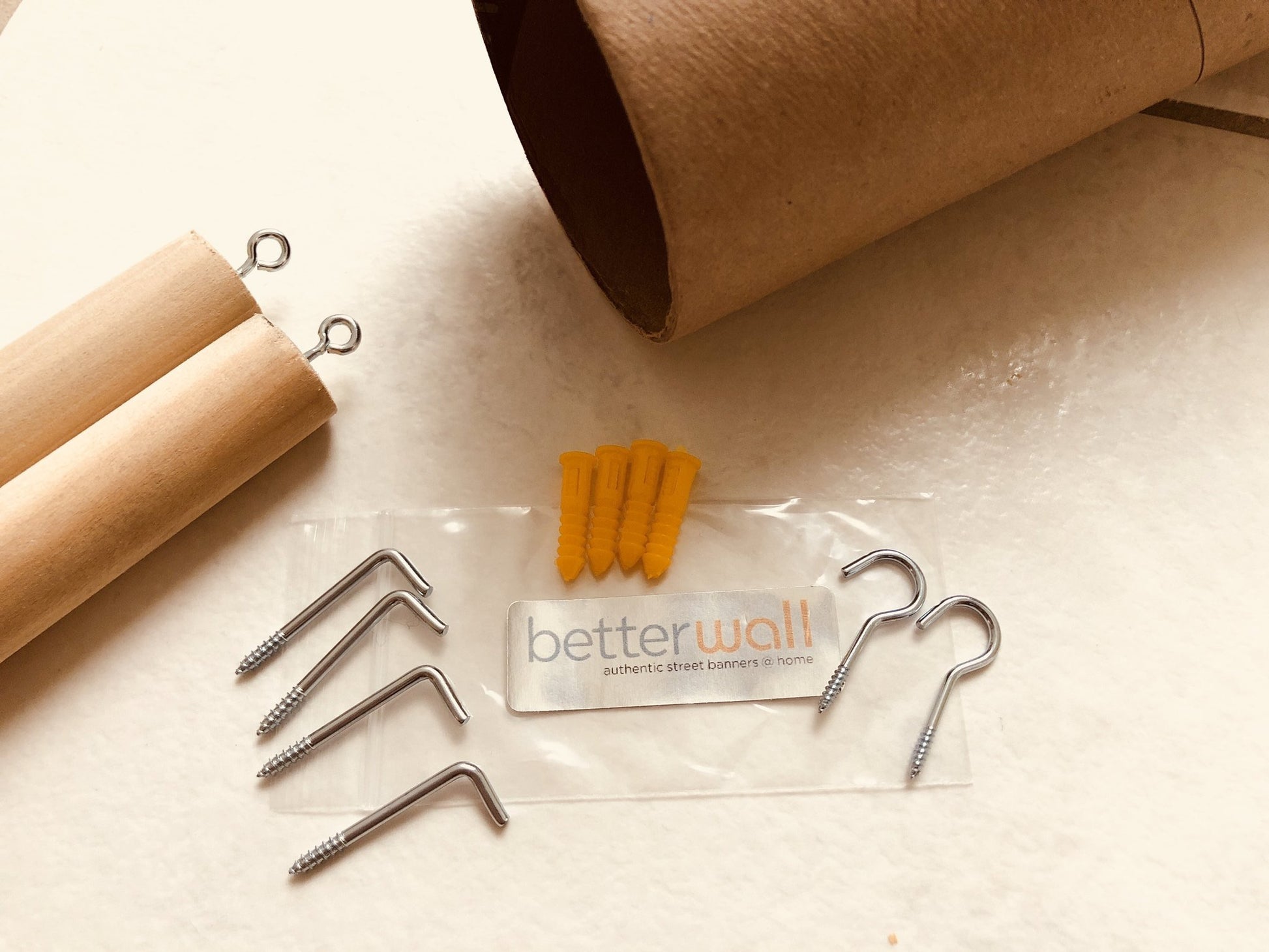The Art Institute of Chicago
Henri Matisse "Goldfish and Palette"
Henri Matisse "Goldfish and Palette"
Couldn't load pickup availability
Share
Limited Edition: 35
Exhibition: Matisse: Radical Invention, 1913-1917
Material: Printed vinyl
Dimensions: 30" x 99" (76cm x 251cm)
Hanging Hardware Included
Summary
Matisse originally depicted himself on the right side of the oil painting, Goldfish and Palette. After much scratching away and reworking which was characteristic of his techniques at the time, he left only his thumb on the palette. Consistent with his "methods of modern construction," Matisse left a tantalizing reminder of something that existed earlier in his process of creation.
Description
The period between 1913 and 1917 is the least studied of Henri Matisse’s long career, yet was pivotal for his exploration of radical and rigorous techniques in his art. Matisse moved away from his earlier Fauvist work in rich color and developed what he called “methods of modern construction”, whereby the act of creation itself was the focus. His paintings took a sculptural approach; paint was layered, and incised, and scraped, and then sometimes, repainted. One of the exhibition’s highlights, Bathers by a River, exemplifies his revolutionary style of taking away, adding to, yet leaving something behind—revealing his process. In fact, Matisse returned to this painting repeatedly over several years (1909-10, 1913, 1916-17) until it was completed.
The influences of both Cubism and the presence of World War I in Paris where he lived during most of this period served as a backdrop to Matisse’s art at this time. While his works made no direct reference to war, the repeated reworking as Matisse adjusted his approach to familiar motifs may have been a byproduct of striving to work creatively under difficult circumstances.
The Art Institute of Chicago's exhibition Matisse: Radical Invention included nearly 120 paintings, sculptures, drawings, and prints, and was the first devoted solely to Matisse’s work from late 1913 through 1917. The exhibition was promoted using two banners, one bearing Goldfish and Palette and the other Apples.
Goldfish and Palette was painted in 1914-15 during a period of stops and starts for Matisse. He tried to join the war effort earlier in 1914 but due to an illness, he failed the medical exam. Struggling to nurture his creativity in light of the war, he frequently returned to familiar themes to experiment with new approaches and techniques. With Goldfish and Palette, Matisse began painting naturalistically, but introduced a shadowy black band, the luminous white goldfish bowl, and a scratched and scraped surface that invokes a certain rawness and mystery.
The top of the banner has a deep red band with “Art Institute of Chicago” reversed out in white. Goldfish and Palette appears in the center of the banner, and at the bottom are the words in small type: “Illinois. Mile after Magnificent Mile”. On the back of the banner, the exhibition name “Matisse: Radical Invention, 1913-1917” appear vertically in black on a white background.
Provenance
This banner was displayed around Chicago from March 20 to June 20, 2010. The exhibition was co-organized with the Museum of Modern Art, New York, and was shown there from July to October 2010.
About the Artist










